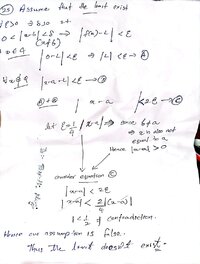I am having a great trouble proving that the limit does not exist for the given piecewise function. I have tried to prove it using the method of contradiction. I want to make sure whether this approach is correct ? If you guys think there is any other alternative method better than this please tell me what that is ? A help would be much appreciated.





